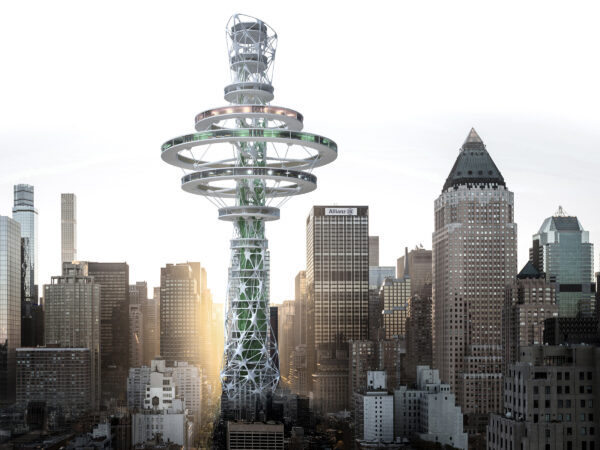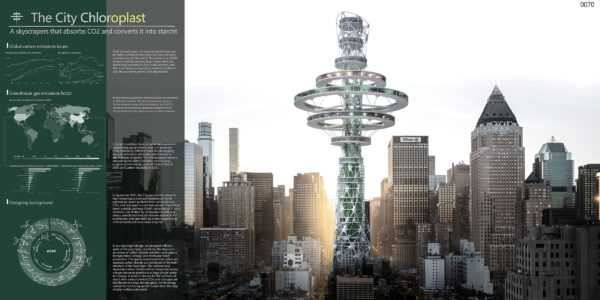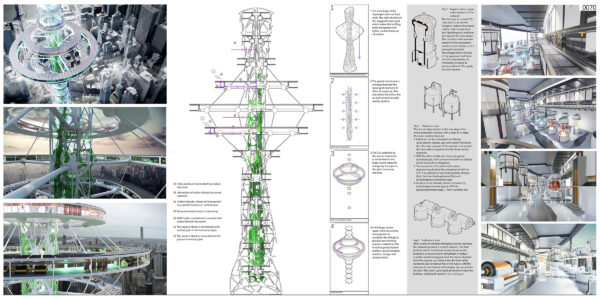Honorable Mention
2022 Skyscraper Competition
Kaiyu Chen, Yong Lin, Ziyi Li, Zhipeng Tao
China
Over the past years, the environmental issues due to carbon emissions have been the focus of many countries around the world. The emissions in North America and Europe have been stable, while the developing countries in Asia, South America, and Africa are facing increasing air pollution problems with economic growth and urbanization.
Similar reasons caused the increased carbon concentration in different countries. Rapid urbanization brings a higher demand for electricity and heating, and the CO₂ emissions from electronic appliances/equipment and transportation are the major sources of carbon emission.
In order to address the environmental issue due to greenhouse gas emissions, and to improve our living conditions, different countries are applying various methods to eliminate carbon emissions and improve air quality. The Chinese government is advocating the carbon emission control policy, proposing the strategic goals of “Carbon Peak” in 2030, and “Carbon Neutrality” in 2050.
In September 2021, the Chinese scientific research team presented a chemical-biochemical hybrid pathway for starch synthesis from carbon dioxide (CO₂) and hydrogen in a cell-free system. The artificial starch anabolic pathway (ASAP), consisting of 11 core reactions, was drafted by computational pathway design, established through modular assembly and substitution, and optimized by protein engineering of three bottleneck-associated enzymes.
In our skyscraper design, we designed different parts of the skyscraper, combining the steps and processes of carbon dioxide collection and capture, transportation, storage, and eventually starch production. The special membranes that collect and separate carbon dioxide are distributed in the main structure of the skyscraper. The collected and separated carbon dioxide will be transported across a huge transverse pipeline to a huge circular space for storage. A series of devices for the synthesis of starch from carbon dioxide (CO₂) and hydrogen are distributed in a large annular space. All the energy needed to run the equipment comes from the large circular rooftop solar panel.

















